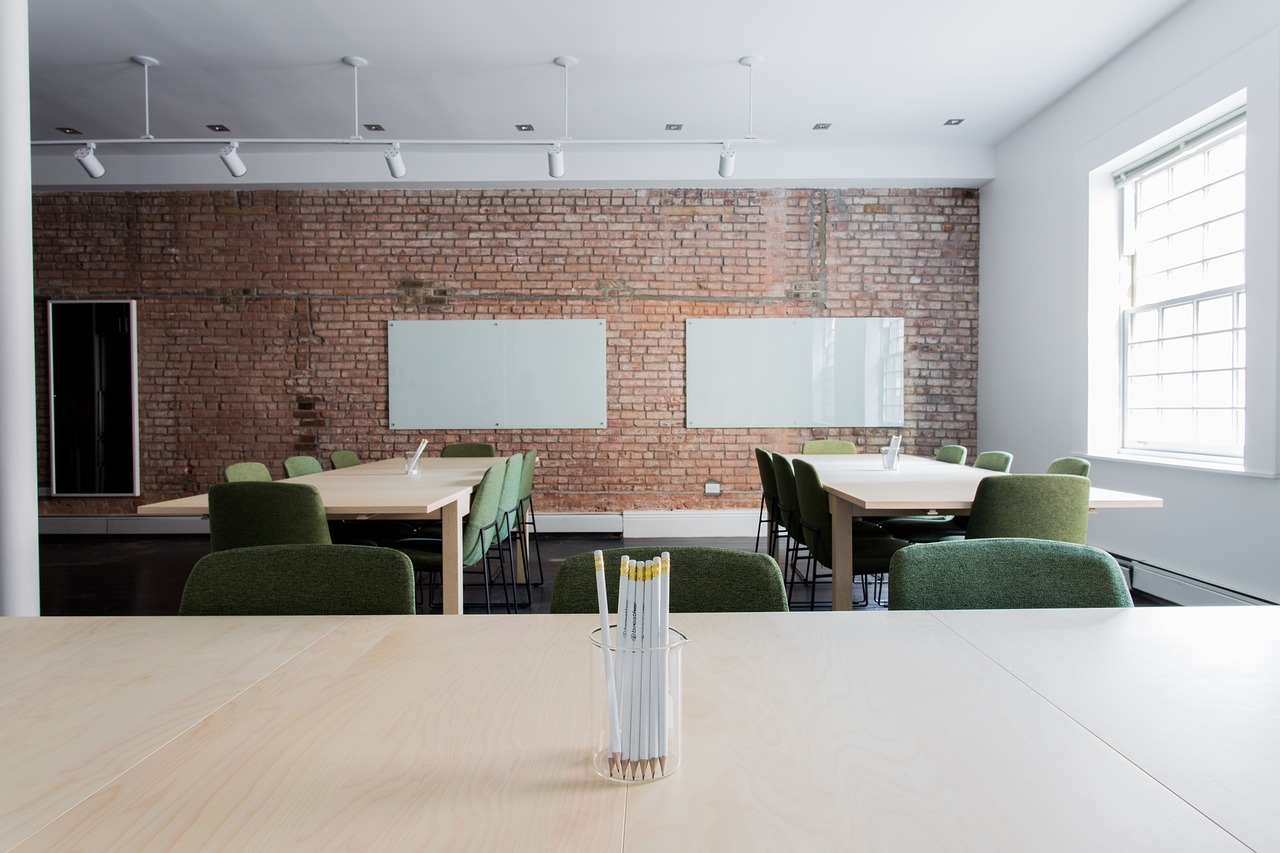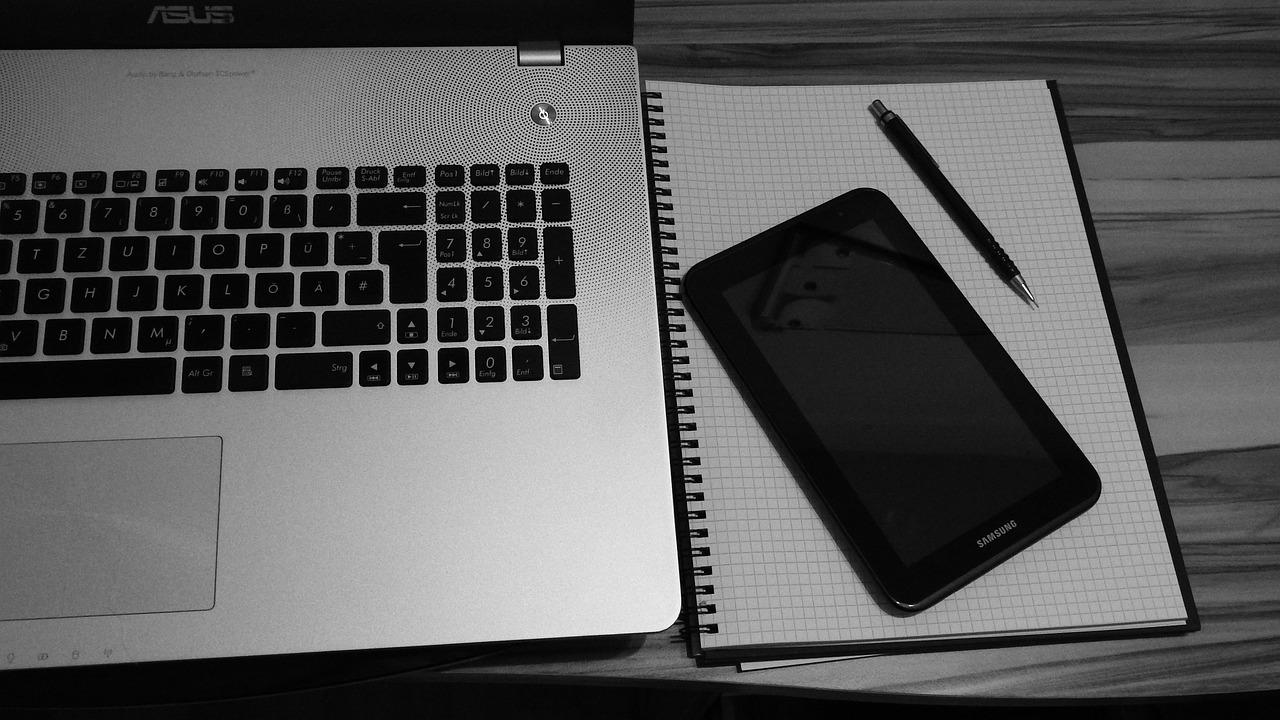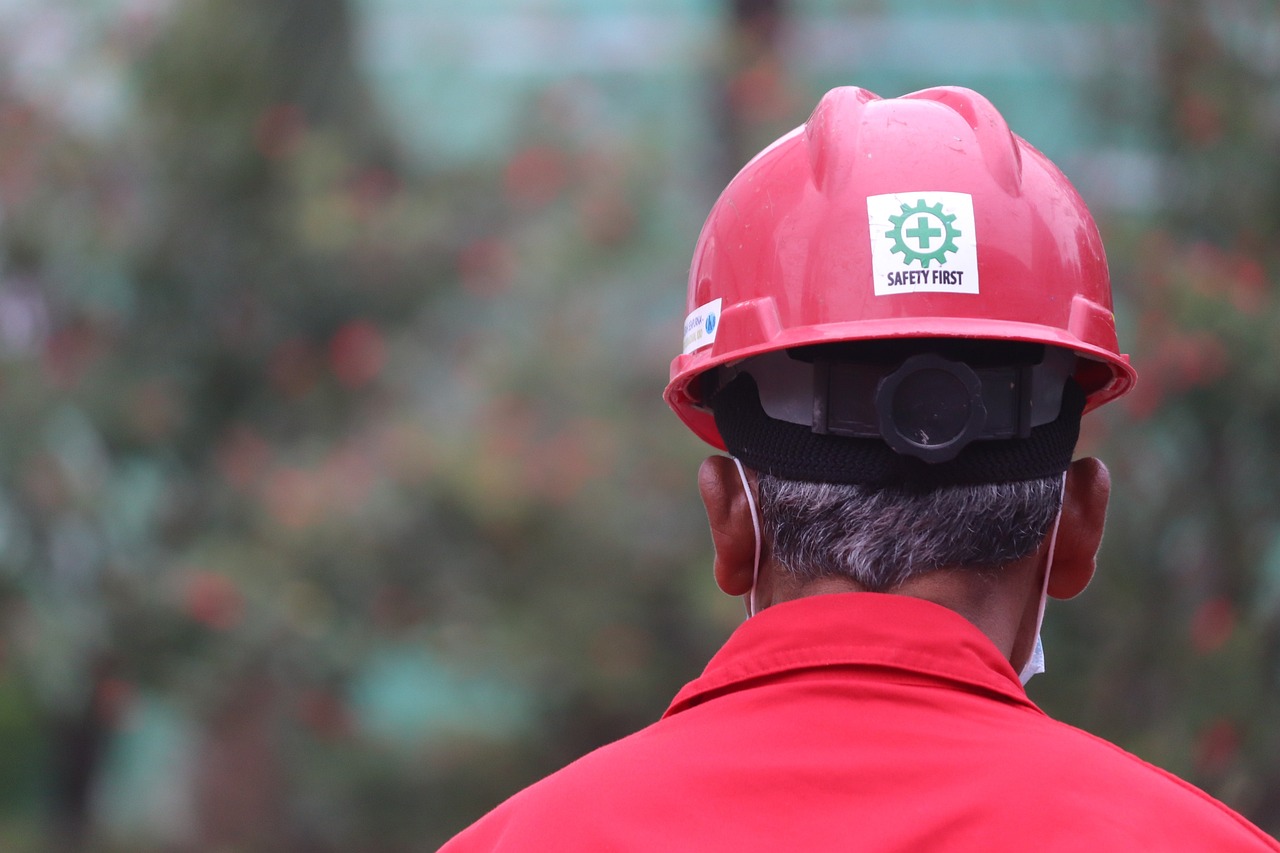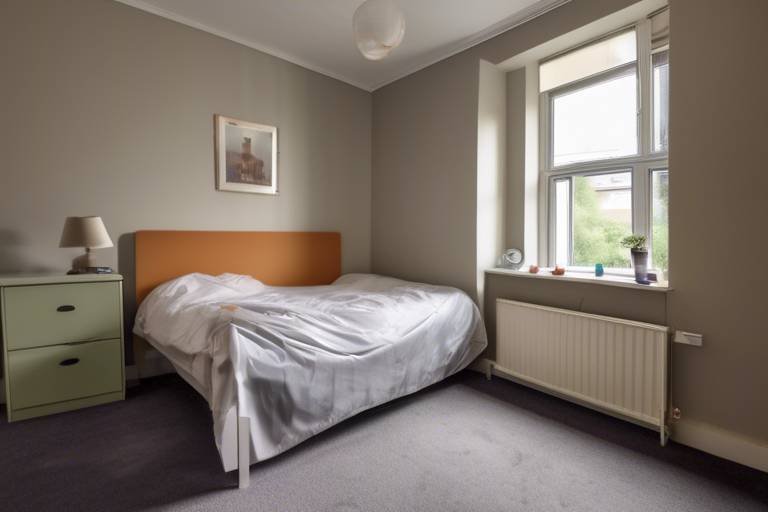Is Your Home Office Safe - Safety Tips to Consider
In today's digital age, a home office is not just a luxury; it's a necessity for many of us. However, while you might be focused on productivity and meeting deadlines, have you ever stopped to consider the safety of your workspace? A safe home office is not only about protecting your physical space but also about ensuring your well-being and security. From ergonomic setups to cybersecurity, there are numerous factors that contribute to a safe and efficient work environment. Let’s dive into some essential safety tips that can help you create a workspace that is both productive and secure.
Creating an ergonomic workspace is crucial for preventing physical strain. Imagine sitting at your desk for hours on end without the right support; it’s like trying to run a marathon in flip-flops! Proper chair height and desk arrangement can make a world of difference. Your chair should support your lower back, and your feet should rest flat on the floor. Adjust your monitor so that the top of the screen is at or just below eye level, which helps reduce neck strain. Additionally, keep your keyboard and mouse close enough to avoid overreaching. By prioritizing ergonomics, you can enhance your comfort and productivity.
Electrical hazards can pose significant risks in a home office. It's easy to overlook, but managing cords and ensuring your equipment is safe can prevent potential disasters. Use cable management solutions to keep cords organized and out of the way. Avoid overloading power strips, and instead, use surge protectors to safeguard your devices. Regularly check your electrical outlets and cords for any signs of wear and tear. By being proactive about electrical safety, you can create a more secure workspace.
Fire safety is paramount in any workspace. You wouldn’t want your hard work to go up in smoke, right? Install smoke detectors and test them regularly to ensure they’re functioning. Keep a fire extinguisher within easy reach, especially if you have equipment that generates heat. Additionally, store flammable materials, like paper and cleaning supplies, in a safe place away from heat sources. By incorporating these fire safety measures, you can protect both your workspace and your peace of mind.
With remote work comes increased cybersecurity risks. Think of your online data as a treasure chest; you wouldn’t leave it unlocked, would you? Secure your devices with strong passwords and enable two-factor authentication wherever possible. Regularly update your software to protect against vulnerabilities. Be cautious of phishing attempts—if something seems off in an email, trust your instincts and verify before clicking any links. By adopting robust cybersecurity practices, you can safeguard your sensitive information.
Being prepared for emergencies is vital. Imagine facing an unexpected situation without a plan—it can be overwhelming! Create an emergency plan that outlines what to do in case of fire, medical emergencies, or natural disasters. Assemble a first-aid kit stocked with essential supplies, and make sure you know the local emergency contacts. By taking these steps, you ensure that you and your workspace are ready for anything life throws your way.
Maintaining your health while working from home is essential. It’s easy to fall into a rut when you’re surrounded by the comforts of home, but don’t forget about your well-being! Schedule regular breaks to stretch and move around. Consider incorporating a quick workout or mindfulness practice into your day to manage stress. Remember, a healthy mind and body lead to a more productive work environment. By prioritizing your health, you can create a more positive atmosphere in your home office.
Good air quality is important for concentration and health. Think of your workspace as a plant; it needs the right environment to thrive! Improve ventilation by opening windows when weather permits or using air purifiers to filter out allergens. Incorporating indoor plants can also enhance air quality while adding a touch of nature to your office. By focusing on indoor air quality, you can create a refreshing work environment that boosts your productivity.
If you have children or pets at home, their safety is a priority. It’s not just about keeping them entertained; you also want to minimize distractions and hazards. Designate a specific area for your work that is off-limits to little ones and furry friends. Use safety gates if necessary, and keep hazardous materials out of reach. By creating a secure workspace, you can focus on your tasks while ensuring the safety of your loved ones.
Routine maintenance can prevent accidents and keep your home office in top shape. Just like a car needs regular oil changes, your workspace requires attention too. Schedule periodic checks of your equipment, furniture, and safety devices. Look for any signs of wear and tear, and replace items as needed. By staying on top of maintenance, you can ensure that your home office remains a safe and efficient place to work.
- What is the most important aspect of home office safety? Ergonomics is crucial, as it directly impacts your physical health while working.
- How can I improve my cybersecurity at home? Use strong passwords, enable two-factor authentication, and keep your software updated.
- What should I include in a home office emergency plan? Your plan should include evacuation routes, emergency contacts, and a first-aid kit.
- How can I maintain good indoor air quality? Improve ventilation, use air purifiers, and add indoor plants to your workspace.

Ergonomic Setup
Creating an ergonomic workspace is not just a trend; it's a necessity for anyone who spends long hours in front of a computer. Imagine trying to work on a project while sitting on a chair that feels like it's been designed for a medieval torture chamber! The discomfort can lead to reduced productivity and even chronic pain. So, let’s dive into the essentials of setting up your home office ergonomically, ensuring you’re not only comfortable but also efficient.
First and foremost, chair height is crucial. Your feet should rest flat on the floor, with your knees at about a 90-degree angle. If your chair is too high, you might find yourself perched uncomfortably, leading to strain on your lower back. Conversely, if it's too low, you could be hunching over your desk, which is a recipe for disaster. Investing in a chair with adjustable height and lumbar support can make a world of difference.
Next, let’s talk about your desk arrangement. Your monitor should be at eye level, about an arm's length away. This positioning helps prevent neck strain and keeps your eyes from getting fatigued. If you have multiple screens, arrange them so that the primary monitor is directly in front of you, while secondary screens are slightly angled. This setup minimizes the need to twist your neck, allowing for a more natural line of sight.
It’s also important to consider your equipment placement. Your keyboard and mouse should be positioned so that your elbows remain close to your body and your wrists are straight. Ideally, your wrists should hover above the keyboard, rather than resting on it while typing. This can prevent repetitive strain injuries, which can be debilitating over time. Some people find that using a wrist rest can provide additional comfort, but be cautious not to rest your wrists while typing.
In addition to these physical setups, it’s vital to take regular breaks. Consider using the 20-20-20 rule: every 20 minutes, look at something 20 feet away for at least 20 seconds. This simple practice can help reduce eye strain and keep your mind fresh. You might even want to set a timer to remind you to stretch or take a short walk, which can rejuvenate your body and mind.
Lastly, let’s not forget about the importance of lighting. Poor lighting can cause headaches and eye strain, making it hard to focus. Aim for a workspace that has plenty of natural light, supplemented by soft, adjustable artificial lighting. Position your desk to avoid glare on your computer screen, and consider using desk lamps with adjustable brightness to suit your needs.
To summarize, an ergonomic setup involves:
- Adjustable chair height for proper foot and knee positioning
- Monitor at eye level to prevent neck strain
- Keyboard and mouse placement to keep wrists straight
- Regular breaks to avoid fatigue
- Good lighting to reduce eye strain
By paying attention to these details, you can create a workspace that not only promotes comfort but also enhances your productivity. Remember, your home office should be a place where you can thrive, not just survive!

Electrical Safety
When it comes to your home office, is not just a recommendation; it's a necessity. Imagine working diligently on your laptop, and suddenly, you notice a faint smell of burning plastic. Yikes! This scenario could easily lead to a disaster if proper precautions aren't taken. To keep your workspace safe and functional, there are several key practices you should adopt.
First off, managing cords is essential. Tangles and knots not only look messy but can also become a tripping hazard or cause your devices to malfunction. Consider using cable organizers or clips to keep cords neatly arranged and out of the way. Additionally, ensure that your cords aren't pinched behind furniture or under rugs, as this can lead to overheating.
Next, let’s talk about power strips. While they are incredibly handy, overloading a power strip can lead to serious electrical fires. Make sure to check the wattage of the devices you’re plugging in and never exceed the recommended limits. It's also wise to invest in a power strip with built-in surge protection, which can safeguard your devices from unexpected power surges.
Now, what about the state of your electrical systems? If you live in an older home, it’s crucial to ensure that your wiring is up to code. Faulty wiring can be a ticking time bomb. If you notice flickering lights or frequently blown fuses, it might be time to call in a professional electrician to assess your system. Regular inspections can save you from costly repairs and potential hazards down the line.
One often overlooked aspect of electrical safety is the placement of equipment. Keep devices that generate heat, like printers and chargers, away from flammable materials. A simple oversight can turn into a major incident. Also, be mindful of how you position your devices. They should be on stable surfaces to avoid accidental spills or falls.
In summary, keeping your home office electrically safe involves a combination of good practices: managing cords, using power strips wisely, ensuring your systems are up to code, and placing equipment thoughtfully. By taking these precautions, you can create a safer and more productive workspace.
- What should I do if I notice a burning smell from my electrical devices?
If you notice a burning smell, immediately unplug the device and stop using it. Check the cords for damage and consult a professional if necessary.
- How can I tell if my electrical system needs an upgrade?
Signs of needing an upgrade include frequent blown fuses, flickering lights, or if your home has outdated wiring. It's best to have an electrician perform an inspection.
- Are surge protectors really necessary?
Yes! Surge protectors can protect your devices from voltage spikes, which can occur during storms or due to electrical issues.

Fire Safety Measures
When it comes to ensuring a safe and productive home office, fire safety should never be an afterthought. Imagine working diligently on a project when suddenly, the smell of smoke fills the air. It’s a nightmare scenario, right? To prevent such situations, it’s crucial to implement effective fire safety measures that can safeguard not only your workspace but also your home and loved ones.
First and foremost, having smoke detectors installed in your home office is essential. These devices are your first line of defense against fire hazards. Make sure to test them regularly—ideally once a month—and change the batteries at least once a year. You might even consider investing in interconnected smoke detectors that alert you throughout the house if one detects smoke. This way, you can quickly take action, whether that means extinguishing a small fire or evacuating the premises.
Next, consider the importance of having a fire extinguisher readily accessible in your home office. Not all fires are the same; different types require different extinguishing agents. Familiarize yourself with the types of fire extinguishers available and ensure you have the right one for your workspace. For example, a Class A extinguisher is suitable for ordinary combustibles like paper and wood, while a Class C extinguisher is designed for electrical fires. It’s not just about having it nearby; knowing how to use it is equally important. Take a moment to read the instructions and practice using it if possible.
Moreover, be aware of how you store flammable materials in your office. Items like papers, cleaning supplies, and even certain electronics can become fire hazards if not stored properly. Keep flammable materials in a secure, cool, and dry place, away from heat sources. If you have a lot of paperwork, consider digitizing documents to reduce clutter and minimize fire risk. Remember, less is more when it comes to creating a safe workspace.
Another critical aspect of fire safety is maintaining your electrical systems. Overloading outlets with too many devices can lead to overheating and fires. Use power strips wisely and avoid daisy-chaining them. Instead, opt for surge protectors that can handle the load of multiple devices. Regularly inspect cords and plugs for any signs of wear and tear. If you notice any fraying or damage, replace them immediately to prevent potential fire hazards.
Lastly, it's wise to have an emergency evacuation plan in place. This plan should outline the quickest routes to exit your home in case of a fire. Practice this plan with your family, so everyone knows what to do and where to go in an emergency. Consider creating a designated meeting point outside your home where everyone can gather safely.
In summary, fire safety measures in your home office are not just about compliance; they are about protecting your life, your property, and your peace of mind. By implementing these strategies, you can create a workspace that is not only productive but also safe from the devastating effects of fire. So, take the time to assess your home office today—your future self will thank you!
Q: How often should I check my smoke detector?
A: You should test your smoke detector at least once a month and replace the batteries once a year.
Q: What type of fire extinguisher should I have in my home office?
A: A Class A extinguisher is suitable for ordinary combustibles, while a Class C extinguisher should be used for electrical fires. Make sure to have the appropriate one for your workspace.
Q: How can I improve fire safety in my home office?
A: Regularly inspect your electrical systems, store flammable materials properly, and ensure you have smoke detectors and fire extinguishers in place. Additionally, create an emergency evacuation plan.

Cybersecurity Practices
In our increasingly digital world, the safety of your home office extends beyond physical aspects; it’s essential to prioritize cybersecurity as well. With the rise of remote work, the risk of cyber threats has escalated, making it crucial to adopt effective practices that protect your sensitive information. Imagine your home office as a fortress; if the walls are strong but the gates are wide open, intruders will easily slip in. Here are some vital strategies to fortify your digital defenses.
First and foremost, strong passwords are your first line of defense. Think of your password as the key to your office. A weak key can easily be duplicated. Therefore, use a combination of upper and lowercase letters, numbers, and special characters. Avoid using easily guessable information like birthdays or common words. As a rule of thumb, aim for a password that is at least 12 characters long. Additionally, consider using a password manager to keep track of your various passwords securely. This way, you can create unique passwords for each account without the hassle of remembering them all.
Another critical aspect of cybersecurity is two-factor authentication (2FA). This adds an extra layer of security by requiring not just your password but also a second form of verification, such as a text message code or an authentication app. It’s like having a security guard at your office door who checks your ID before letting you in. Implementing 2FA can significantly reduce the chances of unauthorized access.
Moreover, it’s essential to keep your software and devices updated. Software updates often contain patches for security vulnerabilities that hackers can exploit. Set your devices to update automatically whenever possible, and regularly check for updates on software applications. This practice is akin to regularly servicing your office equipment; it ensures everything runs smoothly and securely.
Be wary of phishing attempts, which are deceptive tactics used by cybercriminals to trick you into providing personal information. Always verify the source of emails or messages requesting sensitive information, especially if they seem urgent or suspicious. If you receive an email from your bank asking you to click a link, don’t rush; instead, go directly to their website by typing the URL into your browser. This precaution can save you from falling victim to scams.
Additionally, consider using a virtual private network (VPN) when accessing the internet, especially on public Wi-Fi. A VPN encrypts your internet connection, making it much harder for hackers to intercept your data. It’s like having a secure tunnel that protects your information from prying eyes. This is particularly important if you handle sensitive data or conduct financial transactions online.
To further enhance your cybersecurity, regularly back up your data. In the event of a cyber attack, having backups ensures that you won’t lose crucial information. Utilize cloud storage solutions or external hard drives to keep your data safe. Think of it as having a safety deposit box; it keeps your most valuable items secure and accessible when needed.
Finally, educate yourself and your family about cybersecurity. Understanding the risks and knowing how to recognize potential threats can go a long way in keeping your home office safe. Consider having regular discussions about safe online practices, similar to how you would talk about fire safety. The more aware everyone is, the less likely you are to face a cyber incident.
In summary, securing your home office from cyber threats involves a combination of strong passwords, two-factor authentication, regular updates, vigilance against phishing, using VPNs, backing up data, and educating yourself and others. By implementing these practices, you can create a safer digital environment that allows you to focus on your work without the constant worry of cyber threats.
- What is the most important cybersecurity practice?
The most crucial practice is to use strong, unique passwords for each account and enable two-factor authentication wherever possible.
- How often should I update my passwords?
It's advisable to update your passwords every three to six months, or immediately if you suspect a breach.
- What should I do if I receive a suspicious email?
Do not click any links or provide any information. Verify the sender's email address and contact the organization directly using official channels.
- How can I tell if my device has been compromised?
Signs include unexpected pop-ups, slow performance, or unfamiliar applications. If you suspect a compromise, run a security scan immediately.

Emergency Preparedness
When it comes to working from home, is often overlooked, but it’s a crucial aspect of maintaining a safe and productive workspace. Think about it: how often do we prepare for the unexpected? Just like having a spare tire in your car, being ready for emergencies in your home office can save you from potential disasters. So, what should you do to ensure you’re prepared?
First off, it’s essential to create an emergency plan. This plan should outline what to do in case of various emergencies, whether it’s a fire, a medical issue, or even a natural disaster. Make sure to include escape routes, meeting points, and communication methods. You can even have a printed copy of this plan near your workspace, so it's always within reach. Don’t forget to involve your family or housemates in this planning process. After all, everyone should know what to do when the going gets tough!
Next, assembling a first-aid kit is a must. This kit should be easily accessible and stocked with the essentials such as band-aids, antiseptic wipes, pain relievers, and any personal medications you may need. You might think, “Oh, I’ll just grab a band-aid from the bathroom if I need it,” but in an emergency, every second counts. Having a dedicated kit can make a world of difference.
Additionally, knowing your local emergency contacts can be a lifesaver—literally! Keep a list of important phone numbers such as local emergency services, poison control, and nearby hospitals. You can create a small table to organize this information:
| Emergency Service | Contact Number |
|---|---|
| Fire Department | 911 |
| Police Department | 911 |
| Poison Control | 1-800-222-1222 |
| Local Hospital | (Insert Number) |
Lastly, consider conducting regular emergency drills. Just as schools practice fire drills, you should practice your emergency plan. This will help you and your family become familiar with the procedures and ensure everyone knows their role. You might even want to set a reminder on your calendar every few months to review and practice your plan.
In conclusion, being prepared for emergencies in your home office isn’t just about having the right tools; it’s about creating a culture of safety. By taking these proactive steps, you’re not only protecting yourself but also fostering a sense of security that can enhance your productivity and peace of mind.
Q: What should be included in a first-aid kit?
A: A first-aid kit should include items like band-aids, antiseptic wipes, gauze, adhesive tape, scissors, pain relievers, and any personal medications.
Q: How often should I review my emergency plan?
A: It’s a good idea to review your emergency plan every six months or whenever there are significant changes in your household.
Q: What are some common emergencies I should prepare for?
A: Common emergencies include fires, severe weather events, medical emergencies, and power outages.

Personal Health and Wellness
When it comes to working from home, should be at the forefront of your mind. After all, a healthy body and mind are essential for maintaining productivity and a positive outlook. Imagine trying to get through your workday while feeling sluggish or overwhelmed—it's not a pleasant thought, is it? That's why it's crucial to implement strategies that keep you energized and focused.
One of the most effective ways to promote wellness is by incorporating regular physical activity into your daily routine. You don’t have to hit the gym for hours on end; even short bursts of movement can make a significant difference. Consider setting a timer to remind yourself to stand up, stretch, or take a brisk walk every hour. You might be surprised at how much a little movement can boost your mood and productivity!
But let’s not forget about mental health. Working from home can sometimes feel isolating, so it’s vital to stay connected with others. Schedule regular check-ins with colleagues or friends, whether it’s a quick chat over coffee or a virtual happy hour. This not only helps combat loneliness but can also provide a fresh perspective on your work challenges. Remember, we’re all in this together!
Another important aspect of wellness is managing stress. Have you ever felt like your to-do list is a never-ending spiral? To tackle stress effectively, consider practicing mindfulness techniques such as meditation or deep breathing exercises. These practices can help clear your mind and improve your focus. You can also create a dedicated space in your home office for relaxation—perhaps a cozy chair with some calming decor. It’s all about creating an environment that fosters both productivity and peace.
Nutrition plays a vital role in how we feel throughout the day. It’s easy to fall into the trap of snacking on unhealthy foods while working from home, but making conscious choices can lead to significant improvements in your overall well-being. Try to keep healthy snacks like fruits, nuts, and yogurt within reach. Not only will this keep your energy levels stable, but it can also help you avoid the dreaded afternoon slump.
To further enhance your workspace, consider investing in ergonomic furniture. A well-designed chair and desk can make a world of difference in how you feel at the end of the day. Poor posture can lead to discomfort and long-term health issues, so prioritize your physical comfort. A simple adjustment in your seating or desk height can lead to a more enjoyable work experience.
Lastly, don't underestimate the power of hydration. Keeping a water bottle at your desk serves as a constant reminder to drink enough fluids throughout the day. Dehydration can lead to fatigue and decreased concentration, so make it a habit to sip water regularly. You might even want to set a goal for daily water intake to keep yourself accountable.
In summary, prioritizing your personal health and wellness while working from home is not just a luxury—it's a necessity. By integrating physical activity, mental health practices, proper nutrition, ergonomic setups, and hydration into your daily routine, you'll create a workspace that not only boosts productivity but also enhances your overall quality of life.
- How can I stay active while working from home? - Incorporate short breaks for stretching or walking, and consider using a standing desk.
- What are some quick stress-relief techniques? - Deep breathing, meditation, or even a short walk can help alleviate stress.
- How important is nutrition for home workers? - Nutrition plays a crucial role in maintaining energy and focus, so opt for healthy snacks and meals.
- Can I improve my workspace ergonomics on a budget? - Yes! Simple adjustments like chair height and desk arrangement can improve comfort without breaking the bank.

Indoor Air Quality
When it comes to creating a productive home office, one aspect that often gets overlooked is . You might be surprised to learn that the air inside your home can be more polluted than the air outside, especially if you’re working in a closed environment. Poor air quality can lead to fatigue, headaches, and even long-term health issues. So, how can you ensure the air in your workspace is as fresh and clean as possible? Let’s dive into some strategies that can help!
First and foremost, ventilation is key. Proper airflow helps remove indoor pollutants and brings in fresh air. If your home office has windows, open them regularly to let in a breeze. If not, consider investing in an air purifier that can filter out dust, allergens, and other contaminants. Look for models with HEPA filters, as they are highly effective in trapping tiny particles.
Another critical factor is reducing allergens. Dust, pet dander, and mold can significantly affect your indoor air quality. Regularly clean your workspace, including surfaces and carpets, to minimize these irritants. You might also want to consider using hypoallergenic materials for your office supplies and furniture. For instance, choosing a desk made of solid wood rather than particle board can reduce the release of volatile organic compounds (VOCs) that can linger in the air.
Did you know that certain indoor plants can also help improve air quality? Plants like spider plants, snake plants, and peace lilies not only add a touch of greenery to your space but also act as natural air purifiers. They can absorb toxins and produce oxygen, creating a healthier atmosphere for your work. Just remember to choose low-maintenance plants if you’re not particularly green-thumbed!
Here’s a quick table summarizing some plants that can enhance your indoor air quality:
| Plant | Benefits |
|---|---|
| Spider Plant | Removes formaldehyde and other toxins |
| Snake Plant | Produces oxygen at night, improving air quality |
| Peace Lily | Filters out ammonia and benzene |
Lastly, consider the impact of your office equipment on air quality. Printers, copiers, and even computers can emit particles and chemicals into the air. Make sure your workspace is well-ventilated, especially when using these devices. If possible, position them away from your main working area to minimize exposure.
In summary, maintaining good indoor air quality in your home office is not just about comfort; it’s about your overall health and productivity. By ensuring proper ventilation, reducing allergens, incorporating air-purifying plants, and being mindful of your equipment, you can create a workspace that not only feels good but also supports your well-being.
- How often should I ventilate my home office? Aim to ventilate your space at least once a day, opening windows or using an air purifier to refresh the air.
- Are there specific plants I should avoid? Yes, some plants can be toxic to pets or children, like philodendrons and oleander. Always research before bringing a new plant into your home.
- What are VOCs and why are they a concern? Volatile Organic Compounds are chemicals that can evaporate into the air from certain products, contributing to poor air quality. Look for low-VOC options when purchasing office furniture and supplies.

Child and Pet Safety
When you’re working from home, it's crucial to create a workspace that ensures the safety of your children and pets. Imagine trying to focus on a project while your toddler is exploring your office supplies or your curious cat is pawing at your keyboard. It can be quite a distraction, right? To maintain a productive environment, there are several strategies you can implement that will keep your loved ones safe while you get your work done.
First and foremost, consider the layout of your home office. Position your desk in a way that allows you to keep an eye on your children or pets while you work. This not only helps you supervise them but also minimizes the risk of accidents. If possible, create a designated play area nearby, equipped with toys and activities to keep them engaged. This way, they can play safely while you focus on your tasks.
Next, think about the hazards that might be present in your workspace. Items like sharp scissors, paper clips, and small electronic devices can pose serious risks to little ones. Ensure that these items are stored out of reach or in locked cabinets. Additionally, consider using cable management solutions to keep cords and wires organized and out of the way. Not only does this reduce the risk of tripping, but it also prevents pets from chewing on dangerous cables.
Another important aspect is to secure any heavy furniture. If you have bookshelves or filing cabinets, make sure they are anchored to the wall to prevent tipping over. Children are naturally curious and may try to climb or pull on furniture, leading to potential injuries. By taking these precautions, you can create a safer environment for your family.
It’s also wise to establish some ground rules for your workspace. For instance, you might want to explain to your children that certain areas are off-limits when you are working. This can help them understand the importance of your work time while also fostering a sense of responsibility. You can even create a fun visual reminder, like a "Do Not Disturb" sign, that they can see when you’re in the zone.
Additionally, consider using child-proofing products around your office. Items such as corner guards, outlet covers, and safety locks can significantly reduce the risk of accidents. If you have pets, make sure to choose office supplies that are non-toxic and safe for animals. Remember, pets can be just as curious as kids, so keeping potentially harmful items out of reach is essential.
Lastly, don’t forget about the importance of regular breaks. Taking short breaks not only helps you recharge but also gives you the opportunity to check in on your kids or pets. Use this time to engage with them, ensuring they feel attended to and loved, while also allowing you to maintain your focus when you return to work.
In summary, maintaining a safe home office for children and pets is about being proactive and mindful of your environment. By implementing these strategies, you can create a workspace that fosters productivity without compromising the safety of your loved ones. Remember, a little preparation goes a long way in ensuring that everyone—both you and your family—can thrive in your home office.
- What are some common hazards in a home office? Common hazards include sharp objects, electrical cords, and heavy furniture that can tip over.
- How can I keep my pets safe in my home office? Store hazardous materials out of reach, use child-proofing products, and maintain a clutter-free workspace.
- What should I do if my child interrupts my work? Establish a play area nearby and set clear boundaries about your work time to minimize interruptions.

Regular Maintenance Checks
Regular maintenance checks are the unsung heroes of a safe and efficient home office. Just like you wouldn't drive a car without checking the oil, you shouldn't overlook the importance of keeping your workspace in top shape. Imagine sitting down to work, only to find that your chair is wobbly, or your computer is slow to respond. Frustrating, right? This is why taking the time to conduct routine maintenance can save you from those annoying hiccups and even prevent potential hazards.
Start by regularly inspecting your office furniture and equipment. Check for signs of wear and tear, such as loose screws or frayed cables. For instance, a chair with a broken wheel can lead to accidents, while a damaged power cord can pose a fire risk. To make this process easier, consider creating a maintenance checklist that you can follow on a monthly basis. Here’s a simple example:
| Item | Frequency | Notes |
|---|---|---|
| Chair and Desk | Monthly | Check for stability and wear |
| Electrical Cords | Weekly | Look for frays or damage |
| Computer Equipment | Quarterly | Clean and check for updates |
| Fire Extinguisher | Yearly | Ensure it’s charged and accessible |
In addition to checking your physical setup, don't forget about your software and digital tools. Regularly updating your operating system and applications not only enhances performance but also protects against security vulnerabilities. Think of it as giving your computer a tune-up; just like your car, it needs the right fuel and care to run smoothly.
Another critical aspect of maintenance is ensuring that all safety devices, such as smoke detectors and fire extinguishers, are in working order. Test these devices monthly, and replace batteries as needed. It's a small effort that can make a huge difference in an emergency. Remember, safety is not just about having the right equipment; it's also about ensuring that everything is functional and ready for use when you need it.
Finally, make it a habit to declutter your workspace regularly. A tidy environment not only boosts productivity but also reduces the risk of accidents. Clear away unnecessary items, organize your documents, and keep your workspace free from distractions. You might be surprised at how much a clean desk can enhance your focus and creativity.
In summary, regular maintenance checks are essential for a safe and productive home office. By taking the time to inspect your workspace, keep your equipment updated, and maintain safety devices, you create an environment that supports your work and well-being. So, roll up your sleeves, grab that checklist, and give your home office the care it deserves!
Q: How often should I check my office equipment?
A: It's advisable to check your office equipment monthly for any signs of wear and tear, while software updates should be done regularly, ideally every few weeks.
Q: What should I include in my maintenance checklist?
A: Your checklist should include items like chair and desk stability, electrical cord condition, computer updates, and the functionality of safety devices.
Q: Why is decluttering important?
A: Decluttering reduces distractions, minimizes hazards, and helps to create a more productive work environment.
Q: How can I ensure my fire safety devices are functional?
A: Test smoke detectors monthly and check fire extinguishers yearly to ensure they are charged and accessible.
Frequently Asked Questions
- What is an ergonomic workspace and why is it important?
An ergonomic workspace is designed to fit the user's needs, promoting comfort and efficiency. It's important because it helps prevent physical strain and injuries, allowing you to work longer and more effectively without discomfort.
- How can I ensure electrical safety in my home office?
To ensure electrical safety, manage your cords by keeping them organized and out of walkways, use power strips with surge protection, and regularly check that your electrical systems are up to code. This helps prevent accidents and ensures your equipment runs safely.
- What fire safety measures should I implement in my home office?
Implementing fire safety measures includes installing smoke detectors, having a fire extinguisher nearby, and safely storing flammable materials. Regularly checking these devices and knowing how to use them can save lives in case of an emergency.
- How can I protect my home office from cybersecurity threats?
To protect your home office from cybersecurity threats, use strong and unique passwords for all your devices and accounts, enable two-factor authentication, and be cautious of phishing emails. Regularly update your software to keep your devices secure.
- What should I include in my emergency preparedness plan?
Your emergency preparedness plan should include a clear evacuation route, a list of emergency contacts, and an assembled first-aid kit. Regularly review and practice your plan to ensure everyone knows what to do in case of an emergency.
- How can I maintain my health while working from home?
To maintain your health while working from home, take regular breaks to stretch, stay hydrated, and incorporate physical activity into your daily routine. Managing stress through mindfulness or hobbies can also boost your mental well-being.
- What can I do to improve indoor air quality in my home office?
Improving indoor air quality can be achieved by ensuring good ventilation, using air purifiers, and incorporating indoor plants that filter air pollutants. Regularly dusting and cleaning your workspace also helps reduce allergens.
- How can I create a safe workspace for children and pets?
To create a safe workspace for children and pets, secure loose cords, keep hazardous materials out of reach, and designate a play area away from your work zone. This minimizes distractions and keeps your loved ones safe while you work.
- Why are regular maintenance checks important for my home office?
Regular maintenance checks are crucial because they help identify potential hazards before they become serious issues. Checking your equipment, furniture, and safety devices ensures everything is functioning properly, making your workspace safer and more efficient.



















